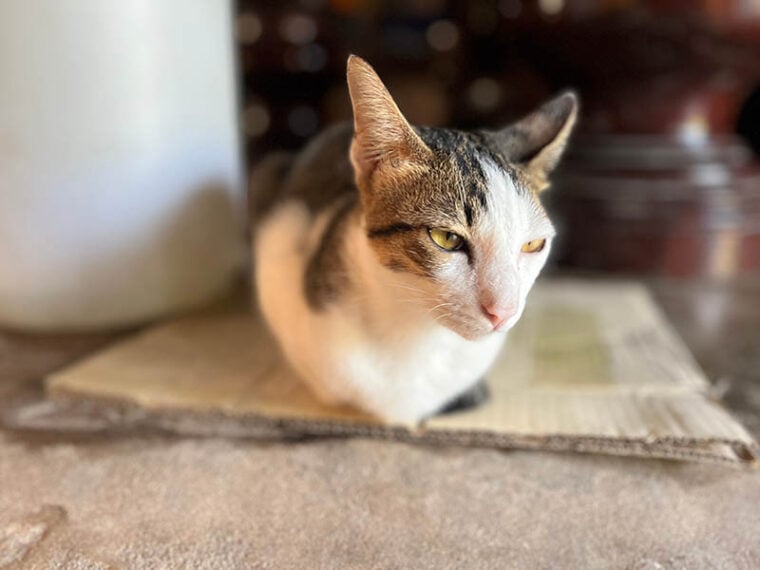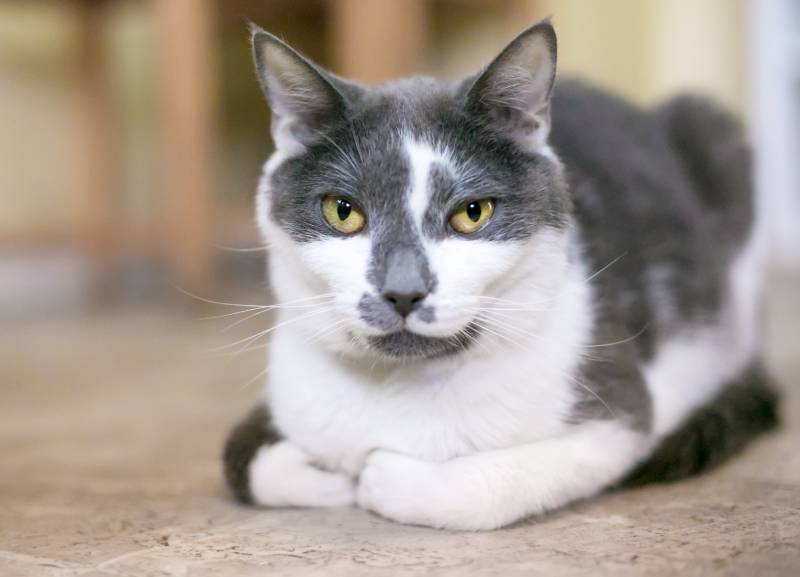
Click to Skip Ahead
The more you pay attention to your cat, the more their behaviors make you question things. One such behavior is cat “loafing.” But what is a cat loaf, and why do cats do it so often? Not only that but is it normal? And when should you worry about it?
Learning what is and isn’t normal behavior for your cat all comes with being a responsible pet owner, which is why we came up with this guide that breaks down everything you need to know about why your cat does this.
What Is Cat Loafing?

Before we can tell you why a cat is loafing, you need to understand what a cat “loaf” is in the first place! A cat loaf is when a cat tucks their paws under their body when they lie down, which gives the appearance of a loaf of bread.
This is the classic cat loaf position, although there are variations. For example, a cat can tuck just their front paws under their body, leaving their rear paws out, and it’s still considered a “loaf” variation. There are too many variations to go over here, just know that the “classic” loaf is with all four paws tucked under the body.
The 3 Reasons Your Cat Loafs
While cat loafing might not seem like a typical position for them to lie in at first blush, it’s actually a very common one. But why do so many cats do it, and what does it mean? We’ve highlighted three common reasons for this behavior for you here:
1. They’re Relaxing
A cat loaf isn’t exactly a great defensive posture, even if it is comfortable for your cat. But for your cat to prioritize comfort over defensiveness or maneuverability, it means they’re comfortable and relaxed with you. This is a great thing, and it’s just one more way your kitty shows they like it inside your home!

2. They’re Staying Warm
Tucking their paws under their body is a classic way for your cat to retain body heat, and if it’s colder in your home, they might be lying like this trying to conserve some body heat. This doesn’t mean your home is freezing, it just means your cat wants to stay a little warmer.
3. They’re Sick or Uncomfortable
While there’s usually nothing to worry about if your cat is loafing, sometimes it can be a symptom of a deeper problem. This is especially true if they’re loafing far more than usual or if there are other changes in their behavior.
Loafing can relieve stress and pressure from other parts of their body, making it the most comfortable position for them, even if it’s not how they would usually lie down.

Things to Look Out For
While cat loafing usually isn’t a sign that there’s something wrong with your cat, it can mean that your cat is sick or injured. But how can you tell the difference between super comfy and injured? Well, if you know what to look for, it’s not all that hard.
Start by looking for things out of the ordinary for your cat. It’s normal for all cats to loaf some, but if your cat is loafing far more than they usually do, there’s likely an underlying reason for this.
If you notice any of these things in addition to your cat loafing more than usual, we highly recommend scheduling a visit with your cat’s vet as soon as possible.
Final Thoughts
Cat loafing might look weird to us, but it’s a perfectly normal way for a cat to lie down in your home once they’re comfortable there. If you have a cat in your home long enough, it’s only a matter of time until they start to loaf, and as long as it doesn’t come with other changes in behavior, it’s usually not anything you need to worry about!
Featured Image Credit: Seemly Fluffy, Shutterstock






